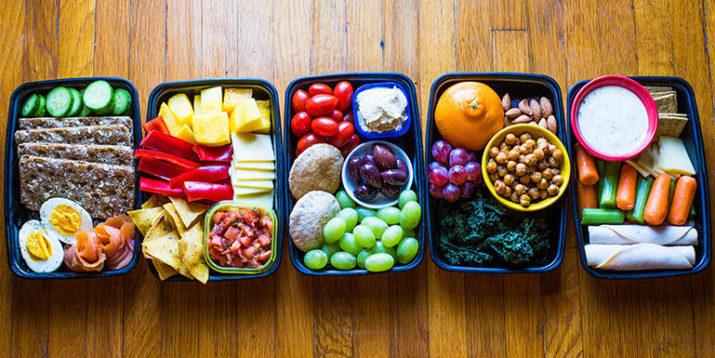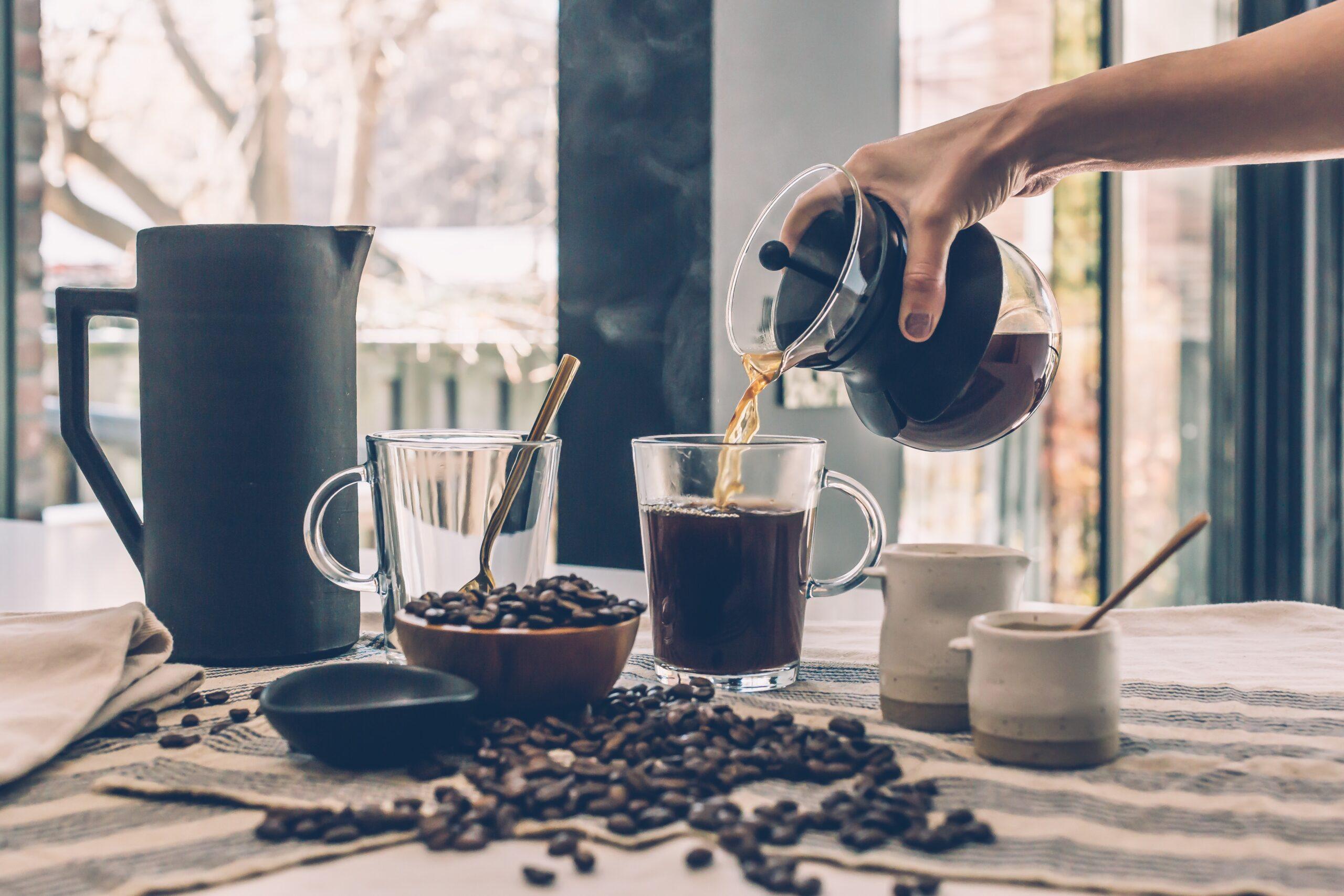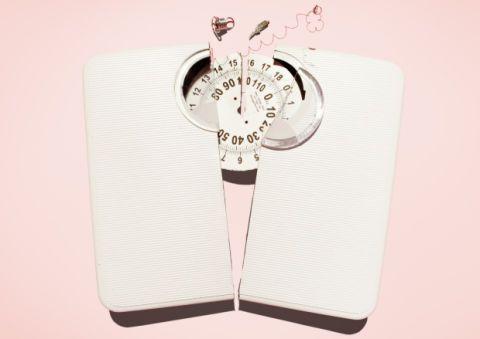67 Scientific Ways to Lose Weight
67 Scientific Ways to Lose Weight
 Here is what you might have observed if you have been trying your best to shed off those unwanted pounds: It is not easy! Even more challenging is the part where you have to make an effort to be consistent in what you are doing in order to stay healthy. Where in the world are you gonna get the motivation and perseverance to achieve your ideal weight goals?
Here is what you might have observed if you have been trying your best to shed off those unwanted pounds: It is not easy! Even more challenging is the part where you have to make an effort to be consistent in what you are doing in order to stay healthy. Where in the world are you gonna get the motivation and perseverance to achieve your ideal weight goals?
One step at a time or one day at a time is the popular adage to work on and employ in building healthier habits. Changing one little thing daily from your usual unhealthy routine can slowly help you make bigger changes in the long run. However, what works for one individual may not be as effective for the other and this is also true in your case. So here is a wealth of weight loss strategies to explore and discover as to which ones will be most effective for you.
1. Put contrast to your plate.
Have you noticed how the color of the plates in restaurants closely match the color of the food being served? Well, the main purpose is to make sure that you enjoy the food and yes, eat more. So what do you do when you are trying to lose weight? Of course do the opposite and use contrasting colors for your plate and food to distract you from eating too eagerly.
2. Keep snacking.
Enjoying your snacks in-between meals is not really a bad thing especially when you munch on the right stuff. You see, your metabolism can slow down if you keep a low calorie diet and skip snack time. Avoiding snacks altogether may be helpful for obese individuals but based on research, skipping meals during the day then gorging on a full meal during night time can spell disaster on your bodily system. This can wreak havoc on your insulin response and put you at risk for Diabetes. So forget about starving yourself and eat healthy snacks in between even healthier meals.
3. Examine the perimeter.
Look over the entirety of the grocery store first before finally deciding to go down and up the aisle to choose which ones to buy. This way, you’ll see the corners for the healthier choices. The nooks of these stores typically are for meat, fish and fresh produce while the aisles on the inner part are for the processed food items. Scanning them first can help you locate these corners so that you can limit the unnecessary pre-packaged food in your basket.
4. Fill up your fridge.
Make it a point to stock your refrigerator with healthier produce, grains and meat. Fill your freezer with frozen vegetables mixes or mixed berries. If you have all these readily available, you might think twice about dining out because you already have ingredients for a healthy meal in your home. Also, this will enable you to save money.
5. Don’t skip breakfast.
If you skip breakfast, chances are you will binge-eat later in the afternoon or in the evening during dinner. Adhere to a schedule that includes eating a breakfast filled with protein to ward off the unhealthy mid-morning snacking.
6. Make your own meal.
If you eat out in a restaurant, chances are you will be served a meal in huge portions and when it is all finished, it can lead to increase caloric intake. It would be wiser to make your own meal at home so that you can control the ingredients and the sizes. You can gradually make the change by starting off with those healthy meals in just 12 minutes or less, like a healthy quesadilla.
7. Organize your pantry.
Arrange your pantry to show the healthier items more than the pre-packaged and processed food. Put those at the back ends of the cupboard and showcase the healthier ones, like the pasta from whole grain, nuts and beans. Remember, just smelling or seeing food can already stimulate your cravings!
8. Do the restaurant style serving.
Changing the style on which you serve your food can do wonders in reducing those calories. Instead of piling up all the casserole, salad and breadbasket on the table, leave some food out of reach in the kitchen. Once you’re done with eating, pause and think first if you do want another helping.
9. Make use of those small plates.
The logic behind this is that if you have smaller plates, it will lead to smaller portions. Conversely, using 12-inch plate will make your brain associate that the white unoccupied space with being less satisfied, thus prompting us to eat more.
10. Snack a bit before you dine out.
Dinner with friends? Have a light snack like an apple or probably a cup of yogurt just before heading out so that you don’t tend to eat more while enjoying with your peers. Make it sure to grab for good kind of protein as research reveals that an afternoon’s small snack of say, Greek yogurt, could bring about increased satiety and reduced hunger, and thus, less eating during dinner.
11. Freeze up those that you will not be serving.
Out of sight, out of mind—holds true for food as well. Once you’re done preparing your meal and have served yourself with a hearty portion, pack the rest of it right away and store in your refrigerator. Research shows that once food is not in sight, you will less likely try to have that second serving.
12. Think twice before you grab a second helping.
The faster we eat, the lesser time we are giving our brain to realize that we are already full, so pause before you reach out for that second serving. It would be best to stand up and go for some short walk before deciding to have that second helping or move to that sinful dessert.
13. Chew your food slowly.
It may not be suitable to your fast paced profile, but chewing slowly can do wonders. Eating slowly gives your brain and body time to realize you’re already full, thus preventing you from eating more.
14. Don’t eat while you are watching television.
Eating while getting hooked on your favorite series can bring about unmindful eating, which in turn makes it easier to just forget about how many cookies or chips you’ve already eaten. Watching those commercials of fast food, sugar-laden drinks and fried food will also stimulate hunger and prompt you to go to the fridge or dial the delivery number.
15. Include vegetables in your diet.
For a long time now, eating vegetables has been a recognized way of living in the pursuit of protecting oneself against obesity. Not only are these nutritious, but they add bulk and fiber to the diet. Add vegetables to your ordinary meals, like using spaghetti squash as a substitute to the typical grain pastas, or mixing pureed veggies to your casseroles or oat meals.
16. Resist all kinds of temptation at any cost.
Like literally. If you see tempting food, you are more likely to gobble it up. Seeing that cookie jar even if you’re not hungry can prompt you to grab a cookie. Making it a habit to veer away from sight of food if you’re not hungry can train your brain to decide rather than letting your eyes call the shots.
17. Grab only a portion.
Instead of grabbing a whole bag of those yummy but unhealthy chips, try getting only a fistful or go ahead and measure out one serving size and then sealing and storing the rest. This way, you will see what you were planning to shove to your mouth, making you mindful. Or better yet, try those snacks which only have 100 calories that will enable you to enjoy the whole thing with lesser calories.
18. Choose protein.
More protein in the diet equates to greater sense of fullness, so it would be wise to increase one’s protein intake. Also, it provides building blocks for muscle growth. Don’t limit yourself to animal sources though as there are many plant sources of protein as well.
19. Get packed up on the fiber.
Not only will fiber enable you to feel fuller longer, but it adds bulk to the diet, enabling you to have healthier motility. So seek out at least 5 grams per serving of fiber and practice snacking on some high-fiber food like baked apples and oatmeal.
20. Go for the healthy fats.
Yes, there are healthy fats and to make a balanced diet, one should allot a portion, albeit small, for this kind. Instead of using butter and oil, try replacing them with avocado, banana or applesauce. Acquire the healthy fat—the polyunsaturated and monounsaturated —from fish, nuts, coconuts, coconut oil and olive oil.
21. Stay away from simple carbohydrates.
The ones considered as simple carbohydrates are found in most food available in the market today— pastries, white bread, refined sugars in carbonated drinks and candies. They are called simple because they provide energy readily but do not have vitamins plus minerals and fibers. They cause an immediate rise in blood sugar but the feeling of fullness do not last, making you grab another serving, and another and another. Instead, choose the complex carbohydrates like whole grains that give you energy and fullness for a longer time, cutting of extra cravings.
22. Stay away from added sugar.
If you add another heap of sugar to your everyday drink like on milk or coffee, it can increase your risk for obesity and cardiovascular disease. Try avoiding added sugar and stick to ones in their natural forms, such as sugars in vegetables, whole grains or fruits.
23. Go for simple swaps.
Simple substitutions can do wonders in cutting calories. Try replacing sour cream with Greek yogurt, prunes instead of butter or an Americano for your favorite latte.
24. Forget about frying and slow down on the oil.
Instead of pouring cooking oil, you can try using non-stick spray or rubbing oil with the use of paper towels to give it a lighter coating.
25. Eat fruits more than drinking your usual fruit juice.
Don’t be deceived. Eating a fruit is a far cry from drinking fruit juice. You not only miss out on the vitamins. Apparently, you do not get the same amount of fiber as eating the real fruit. An apple fruit juice, for instance, has twice the sugar but 7 times less the fiber than the actual fruit. Or try some Lemon water.
26. Chew a mint-flavored gum.
Chewing a minty gum will not necessarily lessen your big appetite, but it will indeed keep yourself busy while preparing your food or socializing amidst a tempting array of appetizers. Research show that even though this practice has limited effects on weight reduction, it can lessen one’s cravings for sweets and minimize hunger in between meals. Also, chewing a mint-flavored gum has added benefits of waking you up as well as decreasing anxiety.
27. Spice it up using cayenne pepper.
Adding cayenne pepper on everyday food such as scrambled eggs will definitely boost metabolism by increasing fast oxidation. Likewise, it can decrease one’s craving for salty, fatty or sweet food.
28. Satisfy your cravings from time to time or occasionally.
Yes, you heard it right, but there is emphasis on the word, “occasionally”. Affirm the cravings you have instead of exhausting all means to push them away, as this can just lead to binge eating in the latter part. Veering away from a food will just make it even more enticing. After a few bites and you still can’t stop? Try using imagery like thinking about a satisfying activity to quell those desires to continue eating. Studies show that these can actually minimize the intensity of the food cravings.
29. Don’t eat all of it.
As mentioned, restaurant portions are bigger than what you cook when you eat at home. So before you make that first bite, make a deliberate effort to cut the portions in half and save it for tomorrow. You’ve not only cut down on your calories for that meal and but you will also have something to look forward to.
30. Have a sip before grabbing a bite.
Drink at least one glass of water before starting a meal. This will make you feel full faster, cutting down on those would-have-been added calories. Gulp down on a mid-meal break to give your brain some time to sense satiety.
31. Enjoy a cup of green tea.
Green tea has been recognized for its most sought-after ability to metabolize unhealthy fat. Couple this with weight training and this can very well be a powerful duo for potential fat loss. You may add slices of lemon to pump up the flavor, and you’re good to go.
32. Drink plenty of water.
Instead of reaching for that sugar-laden energy drink, dry plain water. It not only helps one feel full thus eat less, but it significantly increases the resting energy consumption, the amount of calories one burns if he sat around and do nothing all day. Conversely, lower intake of water is linked to increased body fat and blood pressure.
33. Be more conscious about your liquid calories.
Make healthier choices on the fluids you take by being mindful of what you put on your glass. Instead of airing carbonated drinks with a hearty meal, try gulping on plain water. Drinking these sugar-laden beverages increases one’s risk for obesity.
34. Watering down on your favorite drinks.
This may sound like its undesirable to some, but it can actually help. Slowly adding in more water to your juice can help keep the flavor but not the added sugar. Also, increasing water consumption instead of drinking sweetened beverages is linked with smaller chances of weight gain.
35. Say goodbye to the booze.
Alcohol has plenty of calories and drinking inhibits healthier eating habits, such as ordering pizza and other greasy food to combine with beer.
36. Use those sexy, thin, and tall glasses.
Looks are everything on this one. If you have a craving for juice or maybe a cocktail, then ask for it to be served on a thin and tall glass instead of a short one. Studies show that people tend to pour less on tall or narrow glasses when compared to their short counterparts. In this way, you will have more chances of drinking less.
37. Brush after eating.
After dinner, immediately brush your pearly white teeth. Wanting to keep that fresh breath will ward off pre-bedtime or midnight snacking.
38. Plan and succeed on your goals.
Impractical and far-fetched weight loss goals can actually slow down the long term ones, so make realistic objectives first to usher in those fitness transformations for real.
39. Keep a positive attitude.
Don’t punish yourself if you took a bite of that sinful cake. Instead, prod yourself to stand up and continue working on your weight loss goals by saying positive statements. “ I’m proud to say that I chose healthier food choices today, “ or “ I have the power to control my eating,” can change our way of thinking towards food.
40. Its all about portions and control
Portion control is a very dependable strategy in weight management, but it has never been easy. One tip is to use visuals to imagine portions, like 3 ounces of chicken is like the size of one deck of cards or a 2 inch circle of pasta that is uncooked will make a whole cup if cooked.
41. Think before you eat.
Be mindful of what you eat because how satiated we become after a good number of hours of having eaten does not just depend on how much you have ingested, but how much you “think” you have actually eaten.
42. The importance of meditation.
Stress eating can surely break your weight loss objectives, but one way to ward this practice off is to do meditation, employing techniques such as breathing and muscle-relaxation. This can help stress eaters deal with their own emotions rather than immediately taking it out on food.
43. Mantras to motivate you.
Remind yourself constantly with motivating statements such as, “You can do it!”, “ Push yourself harder!”, or “ A thousand miles begins with a single step!”. They do not cost a dime and they get an important message across.
44. Add, don’t subtract.
So instead of focusing on decreasing your intake of pre-packaged food and sweets, try putting your energy into adding more vegetables, eating more fruit and drinking more water. If you make a habit of this, in just a few weeks’ time, your brain and body may actually just crave for healthier choices without you having to exert so much effort.
45. Ward off stress.
Apparently, stress can indeed induce imbalances and will set you out to satisfy your cravings to make you feel better. Instead of instantly taking it out on a big chocolate bar or a box of honey-glazed doughnuts, think about effective but healthy ways you used to de-stress before. May it be going out for a run or listening to music, resort to approaches that will not lead you to destructive behaviors.
46. Have your end in mind.
The maxim, “What your mind can perceive, the body can achieve,” also holds true for weight loss, so spend time visualizing what you desire to attain. Studies show that repeatedly thinking about achieving your exercise goals, such as running a 21k or increasing your weights by 2 lbs, can actually boost performance.
47. Change your habits one at a time.
Concentrating on less can help one achieve more. When you want to change a habit, having several ones to alter can be overwhelming, so start with one and exhaust all your energy towards achieving it. Make clear cut guidelines on how this can be achieved.
48. See the bigger picture.
Don’t punish yourself if you ate one too many sweets after several months of being on track with your desired diet plans. Do not focus on your error but on those changes that you already achieved. Derive every learning you can on your mistake and start anew tomorrow.
49. Have adequate amounts of sleep.
Research show that lesser hours of sleep is associated with increases in appetite as well as slower metabolism of sugar. So, bank up on sleep and do away with distractions in the evening that can ward of sleepiness.
50. Connect with others.
It’s always better to start on a goal with support from family and friends.
Connecting with others via online communities, such as in Facebook and Twitter, can help you motivate yourself. Sharing goals online can help one feel that you are actually accountable for these plans, thus providing an impetus for adherence. Becoming a Beachbody Coach is an amazing was to stay accountable, get and provide motivation and stay surrounded by like minded individuals.
51. Write it down.
This will enable you to monitor what you eat, like using a journal or food diary. Seeing it written down also helps people adhere to their healthy practices as well.
52. Utilize some health apps to monitor your progress.
This can be a better alternative to just plain writing it down. You can use different applications to help track calorie intake and daily activities. Again, having these can help people be more mindful of their choices and regulate behavior to work to their desired end.
53. Wear it too!
Having a wearable is a convenient and effective way to help you track your steps every day and adjust your movement as the need arises. Go get one for yourself.
54. Take a photo of your food.
This will help you in remembering your meal for your food diary. A recent study conducted show that documenting your food by taking photos of it has a greater effect on developing good food choices as compared to written diaries alone.
55. Pump up the volume.
Research shows that listening to upbeat music can increase your pace and movement. It can also serve to distract you if you are on that intense grueling gym routine.
56. Prevent injuries.
Don’t be too overzealous to start exercising and forego with warming up. This practice will likely lead to injuries that may prevent you from continuing your exercise.
57. Go for the free weights.
Choosing free weights like doing squats with a pair of those dumbbells can activate more muscles effectively, which can help increase the calories you burn.
58. Functional fitness routines.
Doing functional exercises is associated with increase in balance and strength. It also helps decrease the risk for injury. Moving more muscle adds to its growth which increases metabolism and help burn more fat.
59. Don’t be limited by your limitations.
You don’t have to enroll in a weight training gym or maybe run a track to have a good workout. You can use a one set of dumbbells, your own body weight and a neighborhood playground to get you going.
60. Have caffeine before exercising.
Sipping on coffee before working out can actually slow glycogen depletion and encourage breakdown of fat as fuel first, thereby boosting exercise endurance.
61. Find a fitness buddy.
Having a partner, may it be a friend, a coworker, or a family member, not will make exercise more fun, but his or her presence will increase accountability. Having or becoming a Beachbody coach is a great way to have some workout buddies.
62. Don’t rely on monitors.
Exercise machine monitors may not always be all that reliable since they can sometimes reflect a higher value for calorie burned, giving you false sense of accomplishment and can even lead you to become lax on your workout regimen.
 63. Strength Training to the rescue.
63. Strength Training to the rescue.
Strength Training will not only give you muscles. More often that not, it can increase your resting metabolism as well. It will just take a number of weeks and you will already get to see the results of your hard work. Hammer and Chisel is a great program.
64. Do High-intensity interval training (HIIT).
This is a combination of periods of training that is very intensive with some periods of low to moderate training. It boots metabolism and burns even more calories than a steadied stream of workout of longer duration.
65. Pump up your bedroom adventures.
Intense bedroom activities can burn up to sixty calories in a quick 30 minutes. Add to that, it can reduce stress levels as well as reduce your blood pressure.
66. Stand up more and enjoy it.
Sitting more hours during the day has been associated not only to obesity but as well as poor body mechanics and chronic pain. Instead, try standing up on your workstation to get that circulation going smoothly and burn those unwanted calories.
67. Move more.
Indeed, the equation for weight loss is moving more and eating less. Moving more is not just limited to time spent in the gym, but it also means deciding consciously to take the stairs or parking farther from the entrance.







Great post and great tips! I find the most beneficial change for me has been taking up exercise. I cycle to work daily using an electric bike, and attend yoga lessons regularly.